Книга - "The Encyclopedia of Playing Card Flourishes" (слейтинг)
Charlier Pass
For the most part I try to use purely descriptive names for the flourishes in this book. The simplest and most widely known of all one-hand cuts, however, is and always will be called the Charlier Pass. The name is a combination of the nineteenth-century French conjurer Charlier, and the magician's term for cut which itself derives from the ancient incantation "Pass!" - the monosyllabic patter of the days of yore. The move is also sometimes referred to as the Charlier Cut or the Charlier Shift. Incredibly, the invention of this cut is erroneously attributed to an American named Shifty Charlie in one text.
From dealing position (Figure 1-1) move the thumb to the center of its long side of the deck (Figure 1-2). Break the deck with the thumb (Figure 1-3). Elevate the top half by pushing it up with the thumb (Figure 1-4). Put the index finger under the bottom half (Figure 1-5). Push the bottom half toward the thumb with the index finger (Figure 1-6). When the halves clear, let the top half fall into the palm (Figure 1-7). Press the new top half down and square the deck (Figure 1-8). Figure 1-9 is a side view of Figure 1-5, showing how the index finger curls while pushing the bottom half toward the thumb. You must move this finger out of the way before the thumb pushes its half down to close the deck. Most descriptions of this cut will tell you to begin with the deck elevated off the palm, held at the tips of the fingers, so instead of pushing the top half up you are releasing the bottom to fall into the palm, where it is then pushed up and over by the index finger. Since your goal should be the smooth execution of one-hand cuts, you should instead start the Charlier Pass from the standard mechanic's or dealer's grip. This is not to say there aren't some very nice cuts that begin with other grips, but the point is, avoid starting positions that involve time-consuming, unsightly or pointless repositioning of the cards or fingers. Furthermore, if you want to do even two Charlier Cuts in succession, you must start the second cut, at least, with the deck resting in the palm rather than elevated at the tips of the fingers.
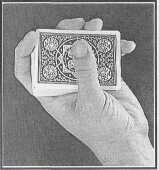
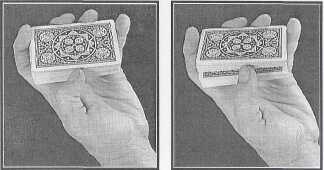
Figure 1-1
Figure 1-2 Figure
1-3
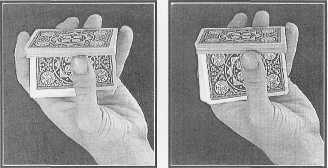
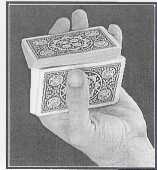
Figure 1-4 Figure 1-5 Figure 1-6
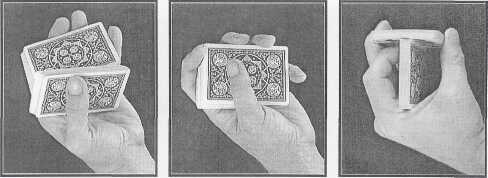
Figure 1-7 Figure 1-8 Figure 1-9

